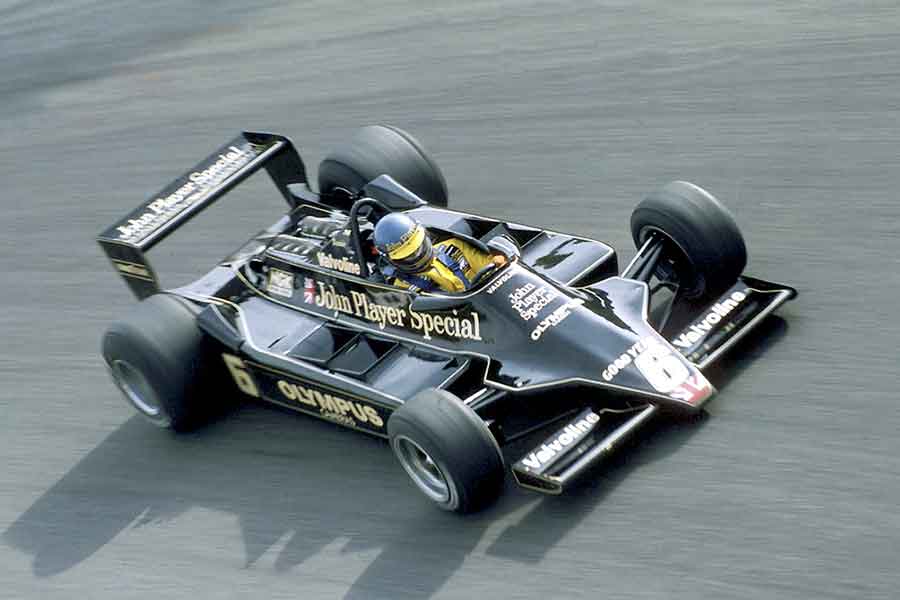Lotus 79 - The Legendary Black Beauty
Lotus 79 was the car that won both Drivers’ and Constructors’ Formula 1 World Championship titles in 1978.
Built around its predecessor
Colin Chapman, the owner of Lotus Team, always was ready for the innovations and experiments on his F1 cars. Some of them weren’t glorious but many were revolutionary and extremely successful. Lotus 79 definitely was one of them. After good try with Lotus 78, its successor took full advantage of aerodynamics and produced significantly more ground effect.
Lotus 79 was built around its predecessor but went through many changes and modifications. Much of the honeycomb used for the chassis was replaced by more conventional sheet aluminium, even larger sidepods were fitted to the car while the rear suspension was also redesigned to allow the air to exit the rear more cleanly.
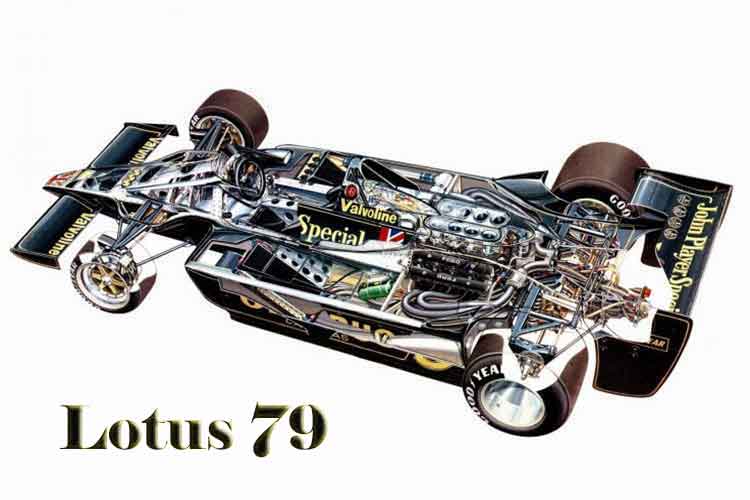
Lotus 79 cutaway
The new car was powered by Ford Cosworth engine, the fuel tank became a single cell located behind the driver what helped in moving the center of gravity to the middle of the car. Additionally, the Lotus 79 was the first F1 car to be designed using wind tunnel and computer design aids. In fact, it was the first car in Formula 1 to use computers to analyze it in the pits during race weekends.
Lotus 79 was successful right from the start
Lotus 79 was tested for the first time late in 1977 and before the season went through many modifications. However, it wasn’t fully prepared for the start of 1978 campaign. However, when it was seen at the racetrack for the first time, the new car immediately was named ’The Black Beauty’, after its famous and legendary John Player Special black and gold livery. This car is still considered as probably the most elegant in the history of motorsport.
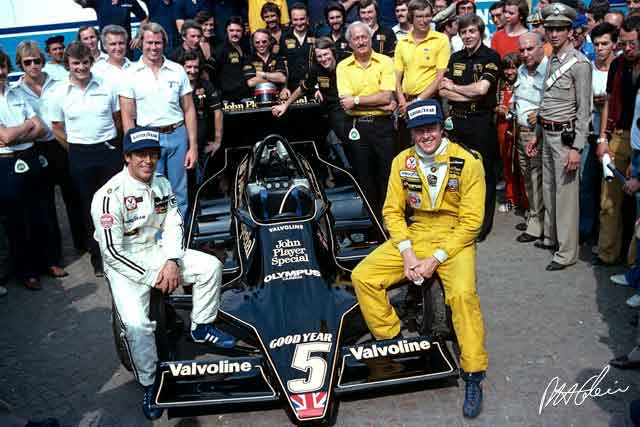
Colin Chapman, Mario Andretti and Ronnie Peterson with Lotus team, 1978 Italian Grand Prix
It had its racing debut at Belgian Grand Prix which was the 6th round of the season. Mario Andretti won the race and did the same in the following race in Spain where Lotus 79 scored 1-2 finish after Ronnie Peterson took the 2nd place at Jarama Circuit. The Swedish Grand Prix was the next race on the calendar but Andretti retired after starting from the pole position while Peterson finished 3rd.
Lotus 79 confirmed its supremacy in the French Grand Prix where Andretti again was the winner and his teammate finished 2nd. The British Grand Prix was the lowest points of the season after both cars retired from the race. It was followed by another Andretti’s victory at Hockenheim while Peterson triumphed in Austria. Finally, in the Dutch Grand Prix, Lotus scored third 1-2 finish that year, again with Andretti on the top of the podium.
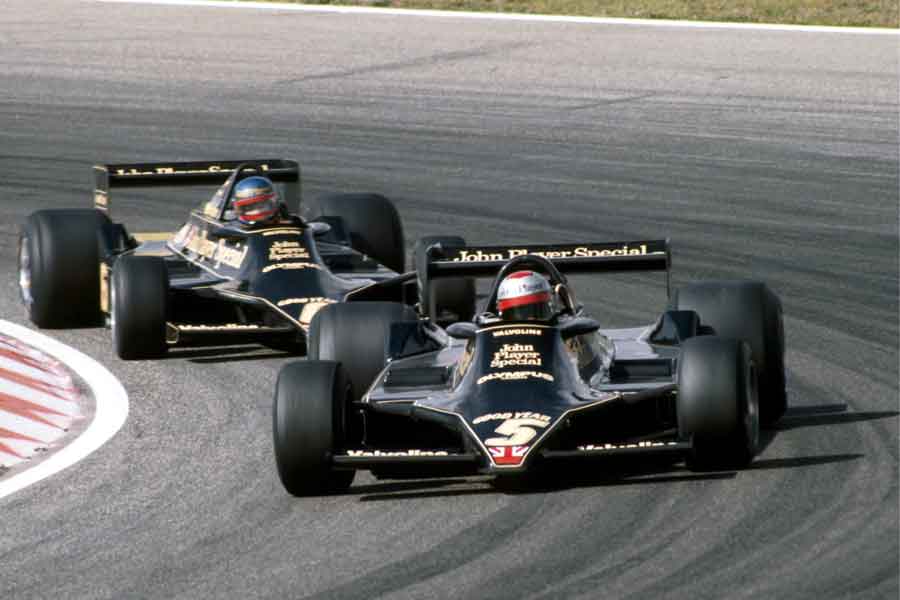
Mario Andretti &Ronnie Peterson, Lotus 79, 1978 Dutch GP
Andretti’s title was overshadowed with a tragedy
The American driver secured 1978 Formula 1 title by finishing 6th in the Italian Grand Prix at Monza but that race was marked with Peterson crash at the start of the race. Ronnie’s car hit the guardrail head-on after the multiple incidents. Both his legs were broken and although his injuries were not thought to be life-threatening he died of post-operation complications. Peterson posthumously finished the season as a runner-up.
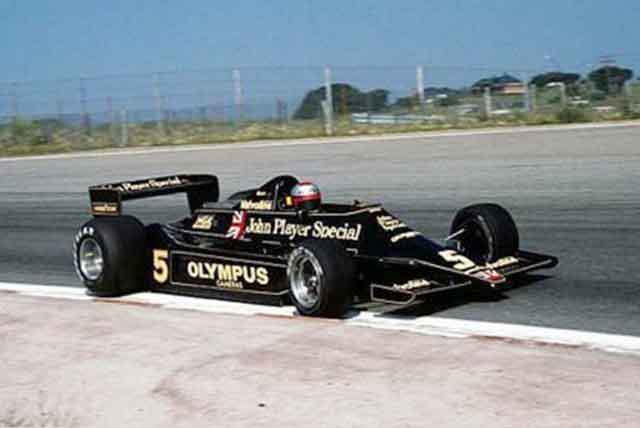
Lotus 79 was key to Andretti’s championship success, 1978 Spanish Grand Prix at Jarama circuti
Andretti didn’t win any of the remaining three races in 1978, while Jean-Pierre Jarier, who replaced Peterson, wasn’t capable of pulling out the maximum from the car that was superior that season. Lotus finished the campaign with two trophies after winning the Constructors’ Championship, beating his nearest rival Ferrari by 28 points.
Lotus fall asleep on the laurels
After a fantastic season of 1978, Lotus team was probably overconfident. The rest of the grid caught the British team with their ground-effect cars and the title defender quickly dropped down. Lotus entered the new season with Lotus 79 driven by Andretti and Carlos Reutemann, scored some notable results but the results deteriorated when the Lotus 80 was introduced. That car was a complete failure and that was the end of an era. This amazing car entered 26 Grand Prix races and scored 7 wins, 15 podiums, 10 pole positions and 5 fastest laps
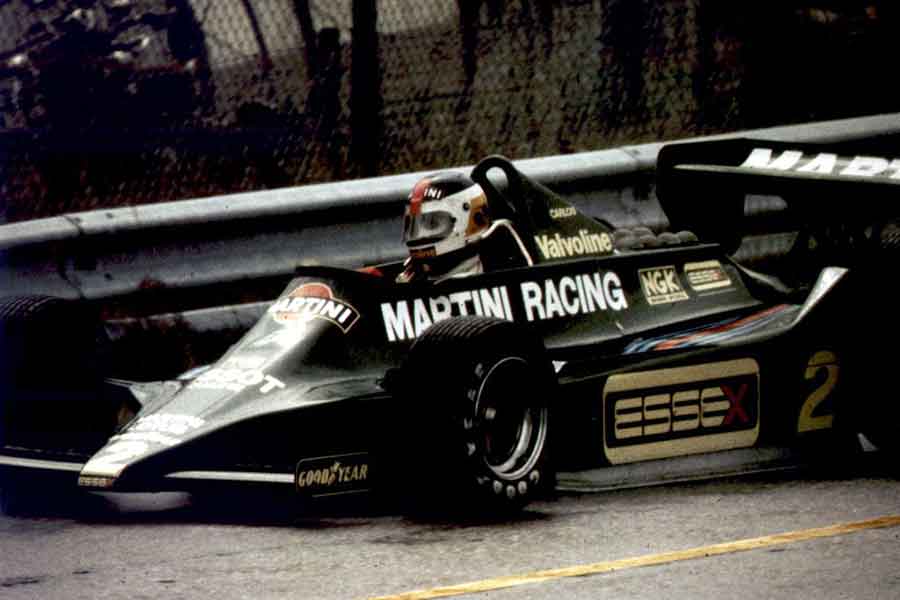
Lotus 79 with the new Martini Racing livery at the beginning of 1979 Formula 1 World Championship
However, the Lotus 79 has a special place in the history of Formula 1, being the first F1 car to take full advantage of ground effects. The underbody aerodynamics, one of Chapman’s many great innovations still plays a vital role in the racing car design although the full ground effect cars are no longer eligible.
Lotus 79 technical specifications
| Length | 4.420 mm |
| Width | 2.146 mm |
| Height | 965 mm |
| Weight | 610 kg |
| Chassis | Aluminium monocoque |
| Front suspension | Upper rocker arms, lower wishbone, inboard spring/damper units |
| Rear suspension | Upper rocker arms, lower wishbones, inboard coil springs over dampers |
| Wheelbase | 2.718 mm |
| Track (front & rear) | 1.730 mm / 1.630 mm |
| Engine | Ford Cosworth DFV 90º V8, 2.997cc, mid-engined, naturally aspirated, longitudinally mounted |
| Power | 475 bhp / 358 kW at 10.500 rpm |
| Gearbox | Hewland FGA 400 5 speed Manual |
Video – Mario Andretti in Lotus 79 at Anderstorp circuit
Photo: boxthislap.org, grandprix.com, pinterest.com, formula1.com, jpslotus.org


